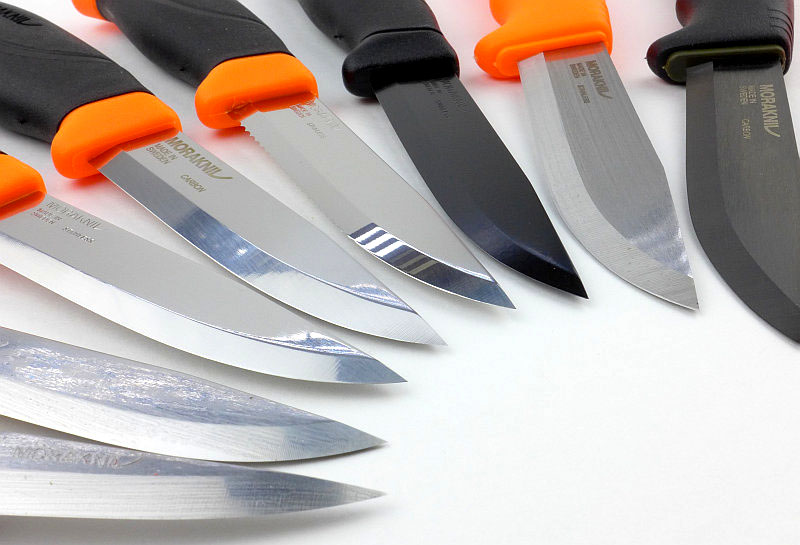Morakniv’s products are extremely well known, but with most people being more used to simply calling them a ‘Mora’. Of course Mora is actually the name of the place in Sweden where these famous knives are made. It was when the two major knife making companies in Mora (Frosts and KJ Eriksson) merged in 2005 that ‘Mora of Sweden’ was born and customers referred to their ‘Mora’ knife. Building on its strong branding, on the 1st of January 2016 Mora of Sweden officially changed its name to ‘Morakniv AB’ after the products it makes – Knives from Mora.
With three new models coming onto the Morakniv range (Garberg, Kansbol and Eldris), in this article, Tactical Reviews is looking at several of the core products in the Morakniv lineup including the Companion, Bushcraft Survival, Axe, and Sharpeners.
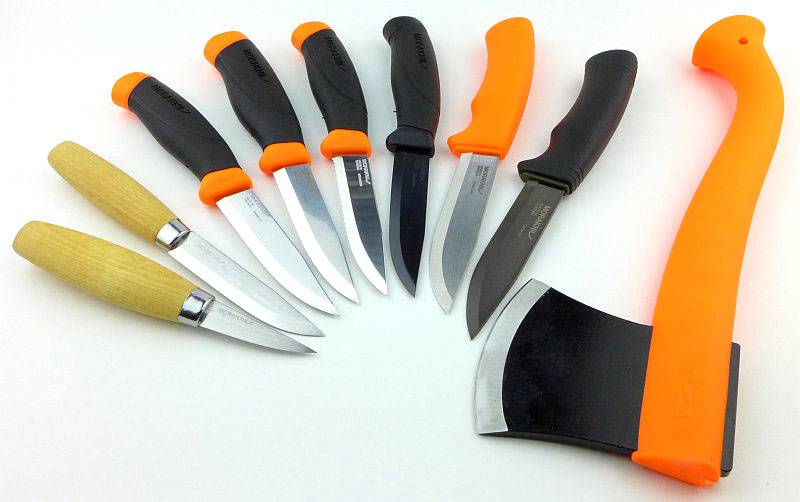
The Blade and Handle Geometry:
Most knives specifications have a basic description of the blade geometry, but in this section I will be taking a more detailed look at geometry and balance.
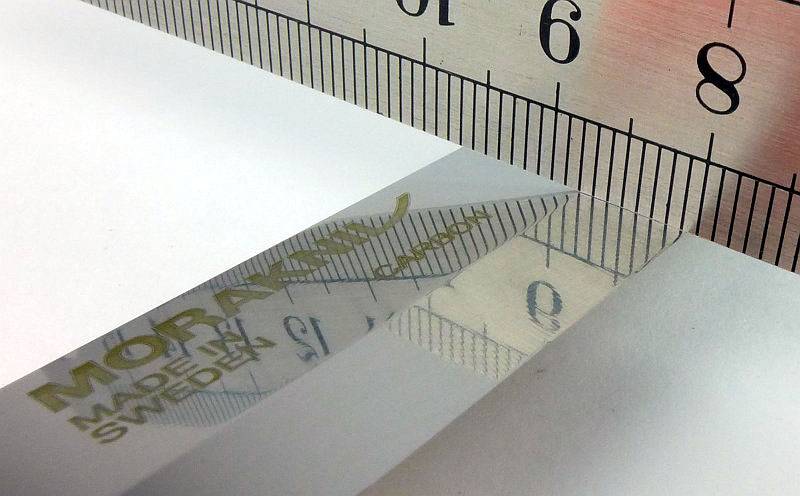
Using a set of gauges and precision measuring equipment including a Vernier protractor, callipers, fixed radius gauges and the unique Arc Master adjustable radius gauge (the one that looks like a crossbow).
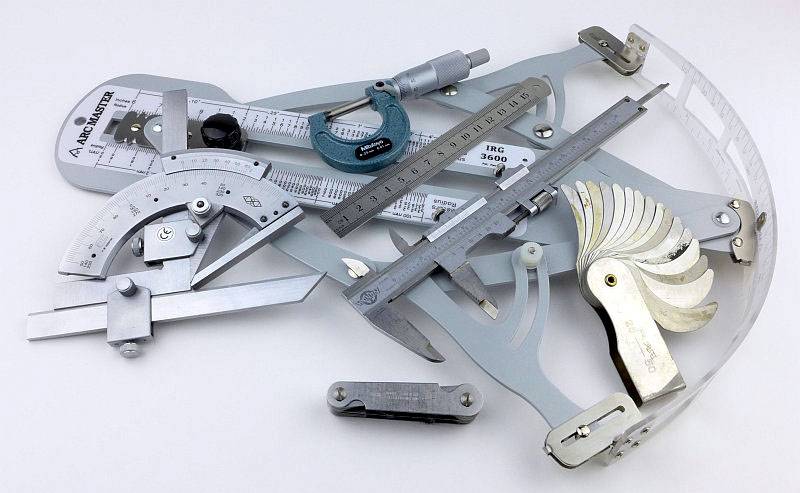
These measurements have been tabulated and are presented along with a few reference blades (8″ Chef’s Knife, 5.5″ Santoku and the popular Fällkniven F1).
Key aspects such as the primary bevel angle, grind type, blade depth, blade thickness, length, weight are detailed, along with balance information.
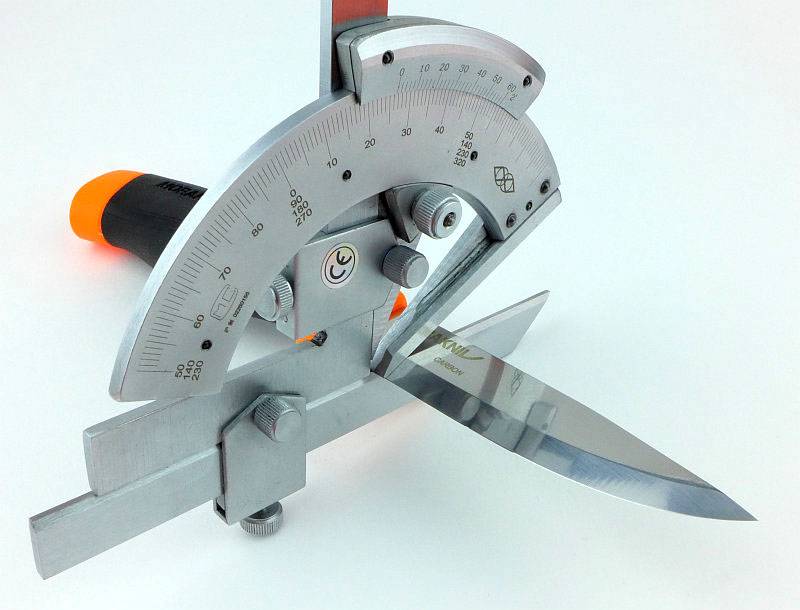
The ‘Balance relative to the front of the handle’ tells you if the knife will feel front heavy, or if the weight is in your hand (a positive value means the weight is forward of the front of the handle). The ‘Balance relative to the centre of the handle’ indicates how close to a ‘neutral balance’ the knife has in the hand.
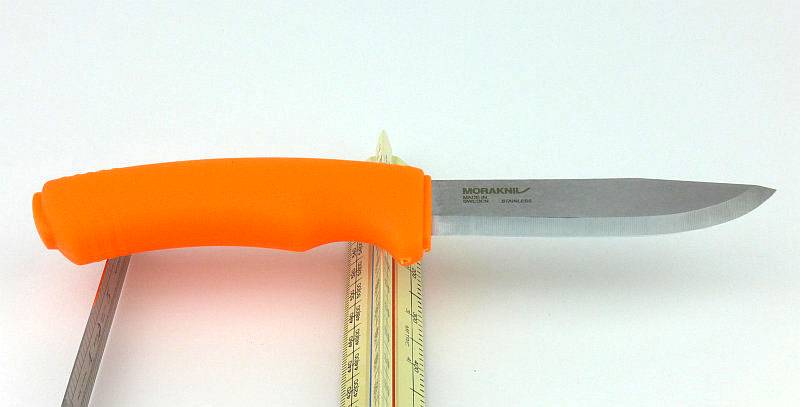
In the case of full convex grinds the approximate centre of the grind is used for the primary bevel angle estimate.
With the large number of knives in this review, three tables have been prepared. Starting with the reference knives and the Axe.

Then all the Companion models together, as well as the 120 wood carving model.
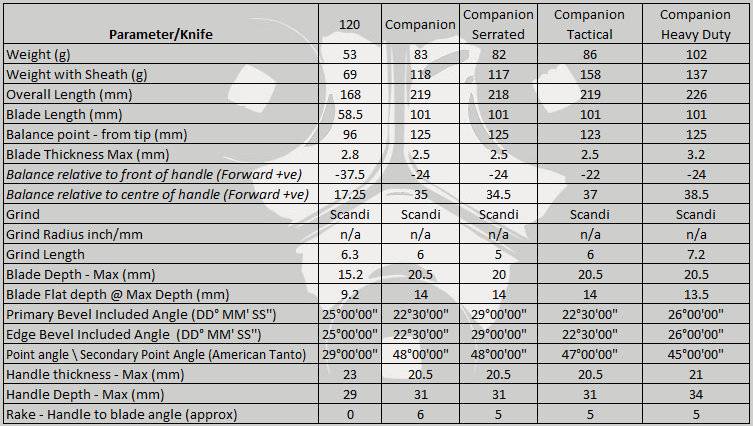
In the final set, the Bushcraft Survival models are shown amongst the Companions and Axe for comparison.
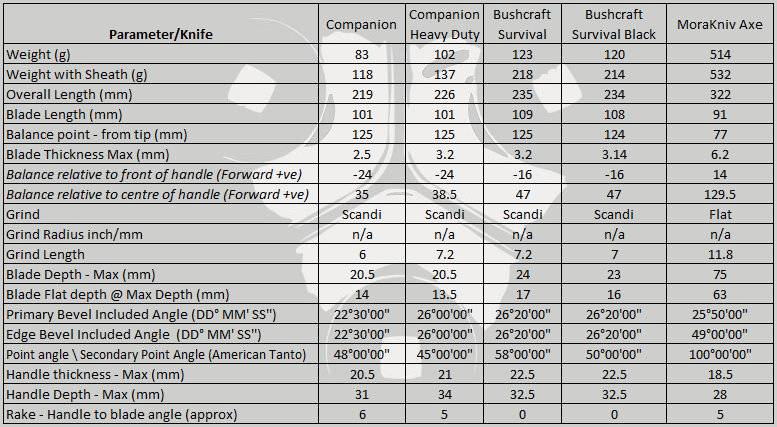
A few more details:
Designed as working tools, Morakniv products arrive in a variety of packaging ranging from none to blister packs and boxes.
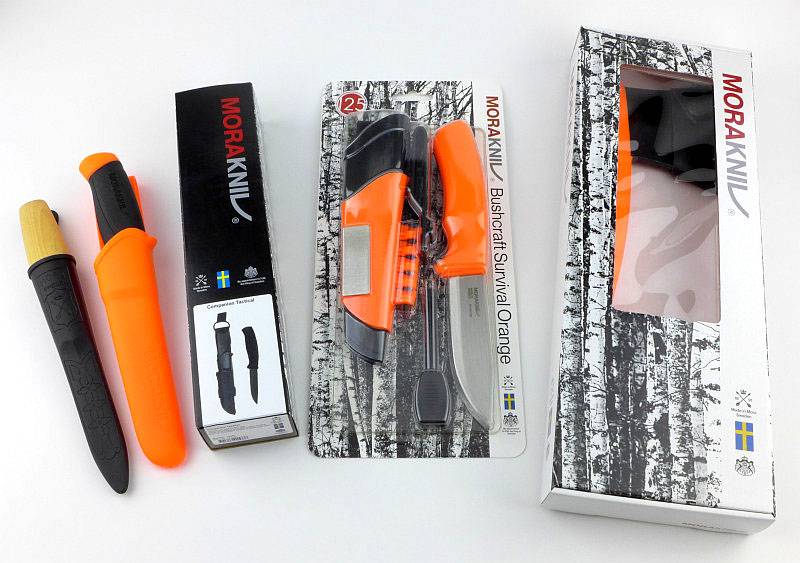
Being the most popular of Morakniv’s products, the Companion comes in several different versions. Ignoring colour variations, the main types are (from left to right), the Companion (Stainless Steel), Serrated Companion (Stainless Steel), Companion Heavy duty (Carbon Steel) and the Companion Tactical (Stainless Steel).
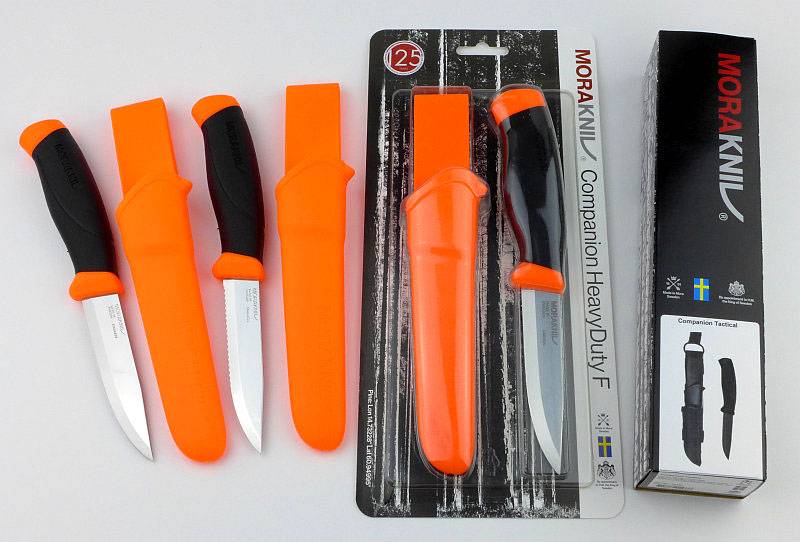
All companion versions come with the same design plastic sheath (colours vary), but the Tactical version has an additional sheath cover which is MOLLE compatible. The Morakniv fluorescent orange is very bright!
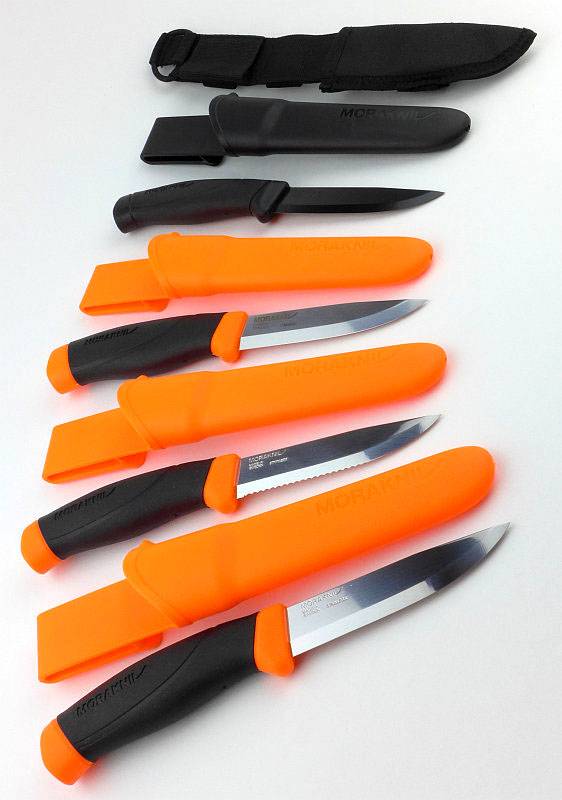
Taking just the Companion knives themselves, the main differences are the thicker blade of the Heavy Duty, and the black ED coated blade of the Tactical.
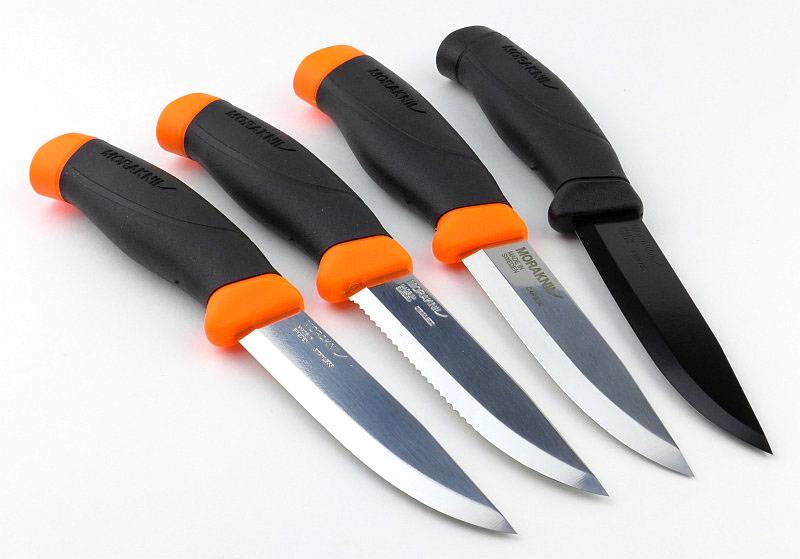
The Companions are considered about the best value outdoor knife on the market, and as a step up in performance, the Bushcraft Survival models are also rated very highly for their value for money. Both models come in a cardboard backed blister pack.
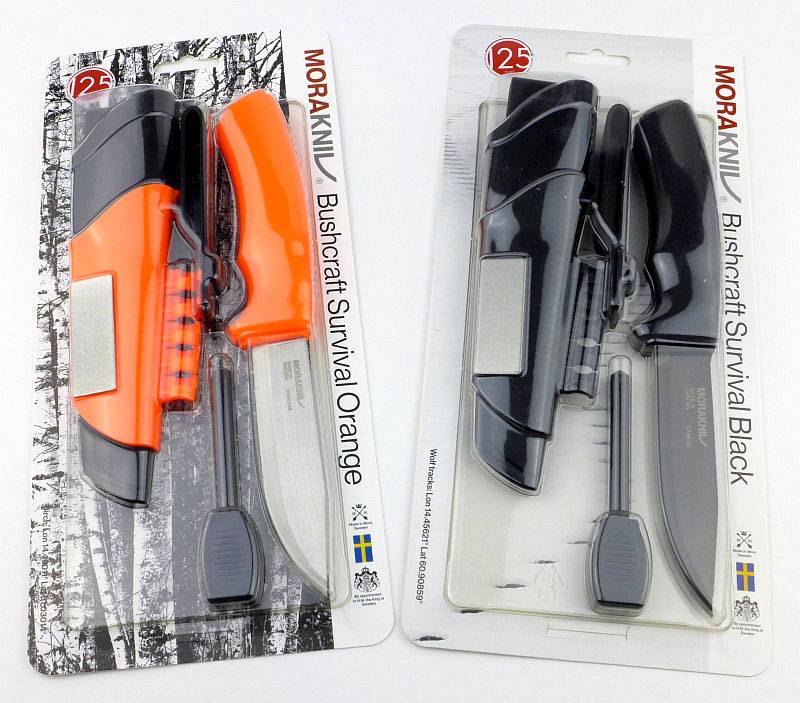
Opening these is easy and does not require another knife thanks to a well thought out design allowing you to get a finger under the plastic part and pull it open.
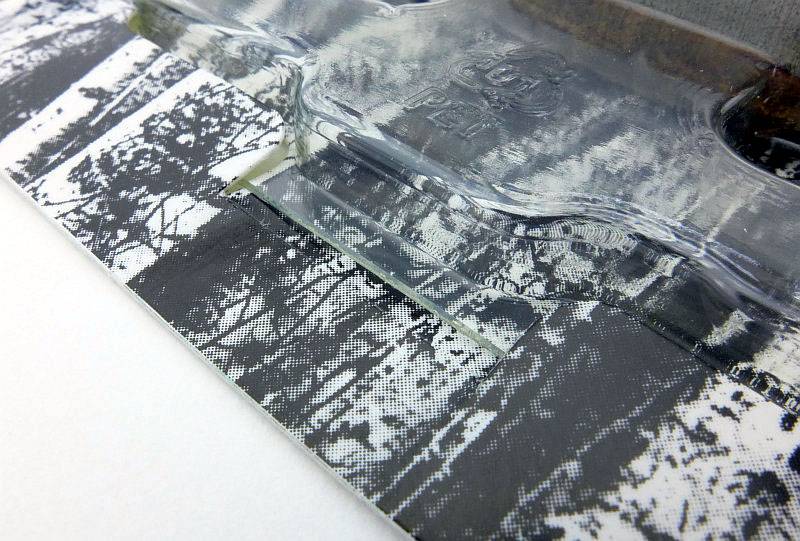
Morakniv have put an impressive package together with a heavy duty blade, diamond sharpener on the sheath and an integrated firesteel. The sheath has an option of two different hangers.
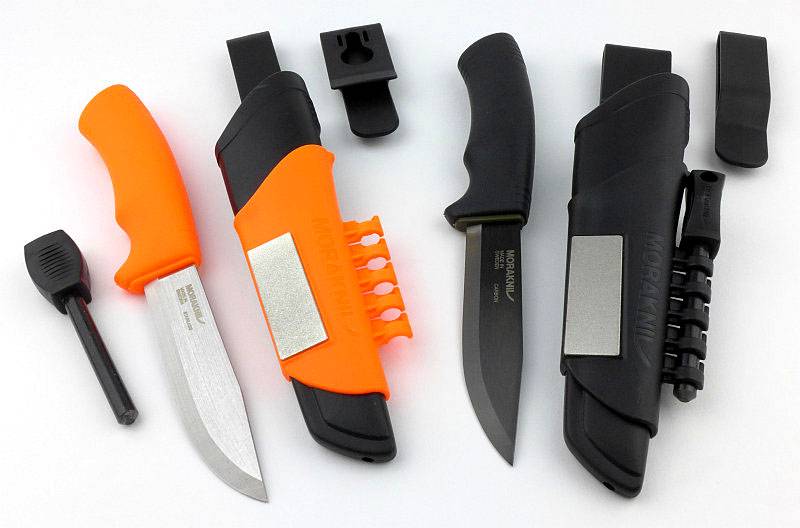
The hangers fit into the back of the sheath, and you have the choice of a fully enclosed belt loop which can handle wider belts, or a hook-over style belt loop. With the knife in the sheath, these loops cannot be removed.
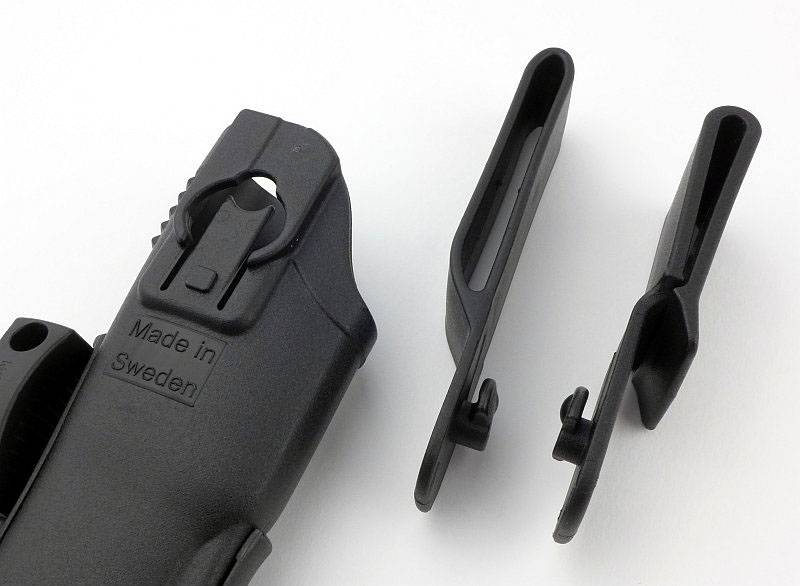
The ‘Survival Bushcraft’ has a Stainless Steel blade, and the ‘Survival Bushcraft Black’ has a Carbon steel blade.
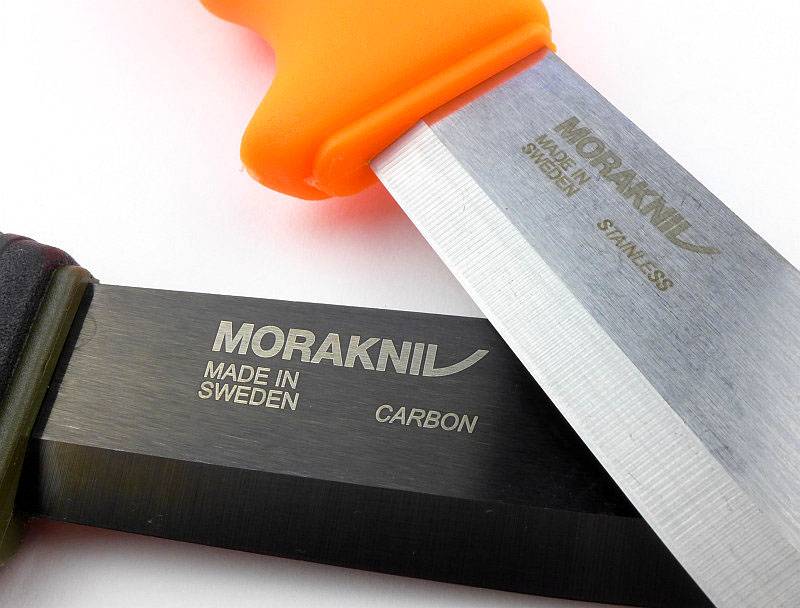
The ferrocerium rod fits into a holder on the side of the sheath.
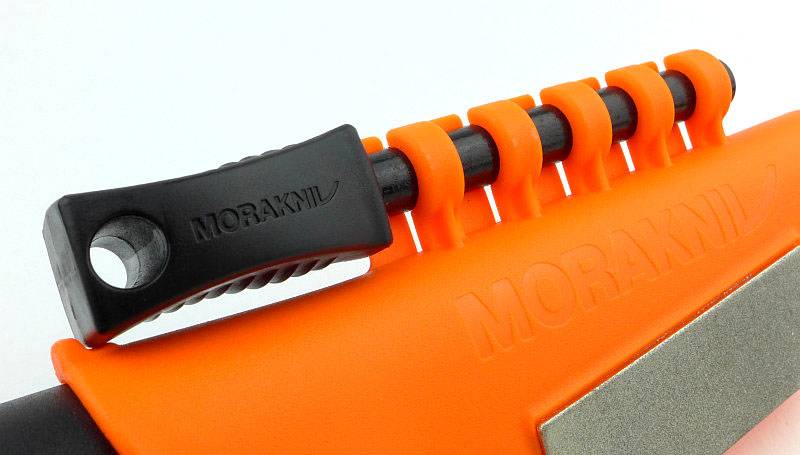
Here the ‘Survival Bushcraft’ is shown in the sheath with the enclosed belt loop fitted, and the ‘Survival Bushcraft Black’ knife and ferrocerium rod are shown next to the sheath which has the belt clip fitted.
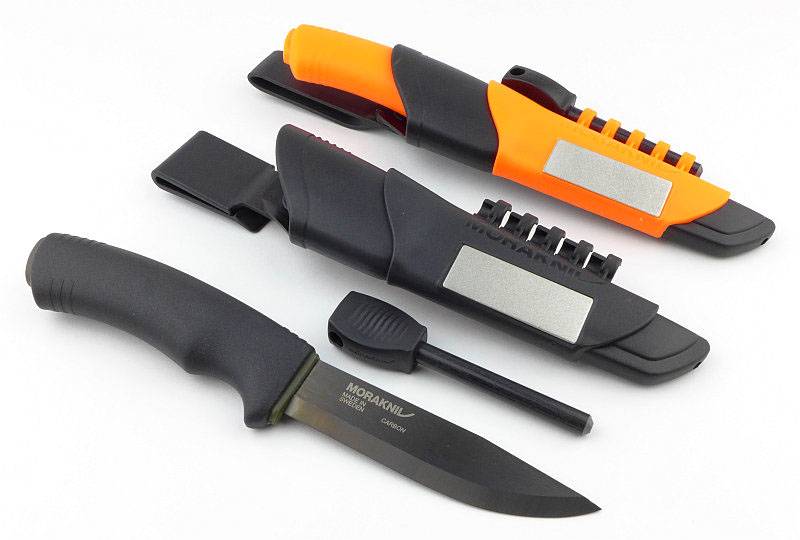
Next up in the whistle-stop tour are the Outdoor Axe and three diamond sharpeners.
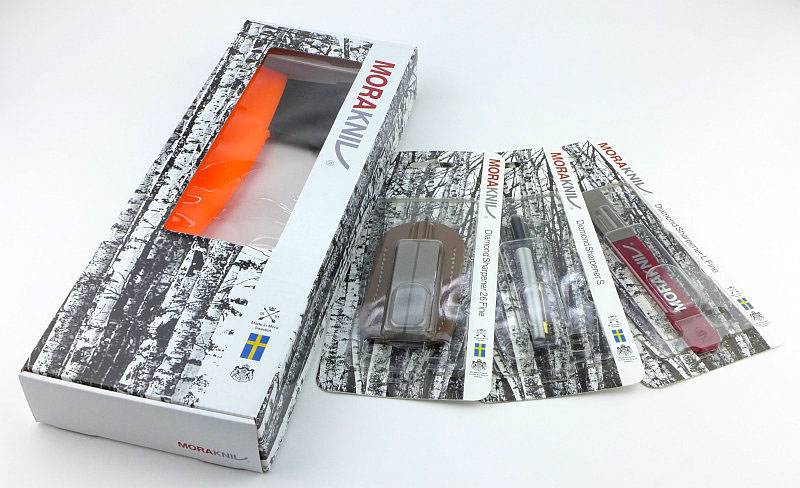
Unpackaged for a better view. Like the Companions and Survival Bushcraft models, the orange handle of the Outdoor Axe is very fluorescent.
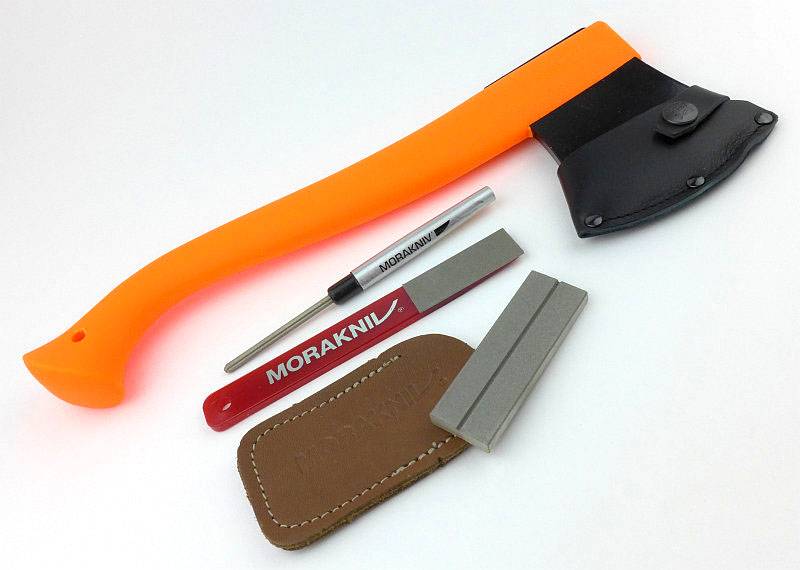
Though this image is low in contrast, you can see the Outdoor Axe still bears to older ‘Mora of Sweden’ mark, but the box it came in was branded Morakniv.
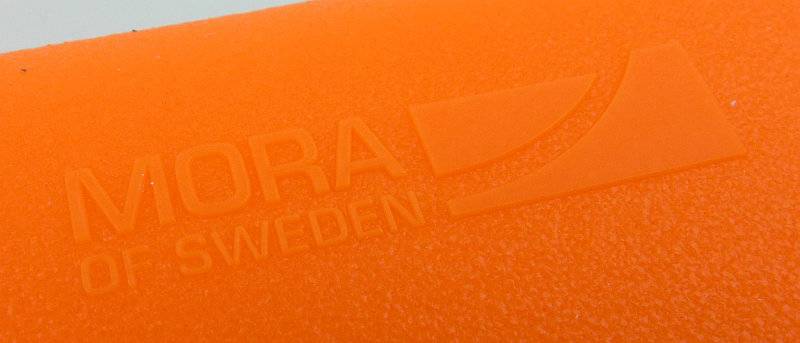
Like the Companion Tactical the Outdoor Axe has an ED coated blade.
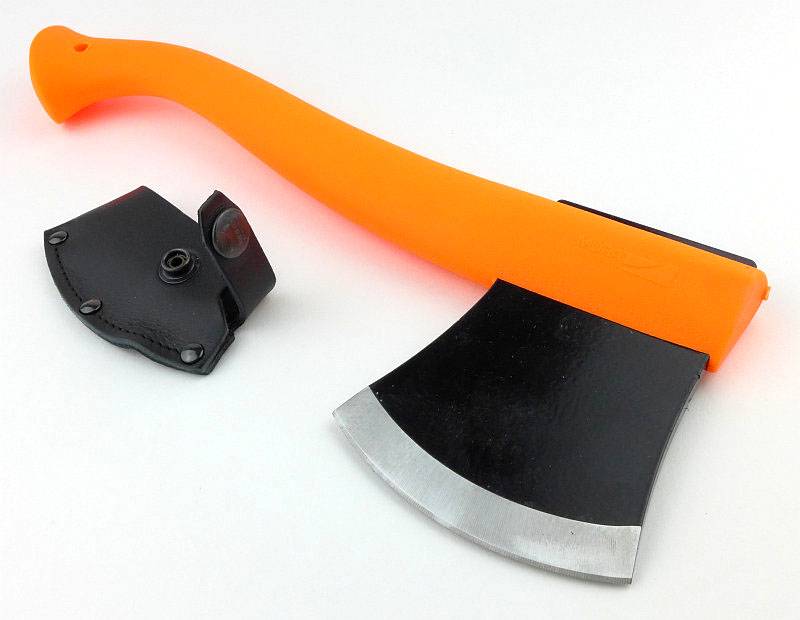
The Axe blade is Boron Steel.
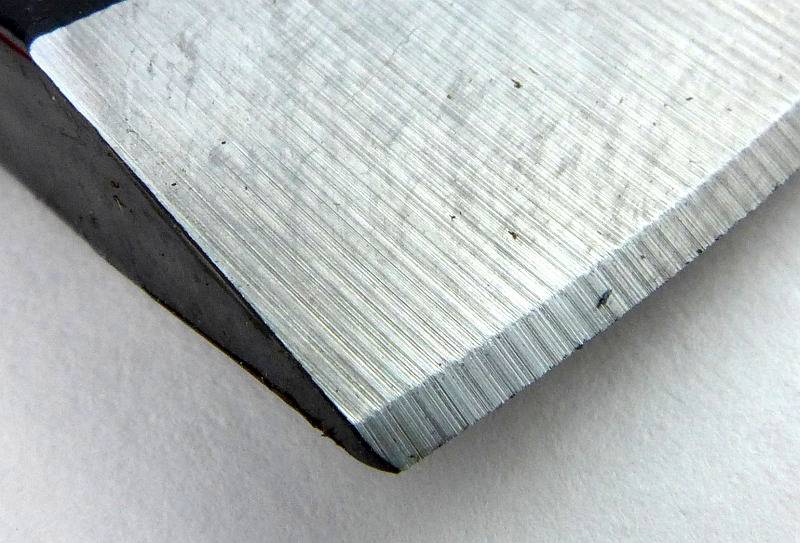
A perfect camping trip kit here with the Outdoor Axe, Bushcraft Survival, and a 120 for fine whittling when relaxing next to a roaring camp fire.
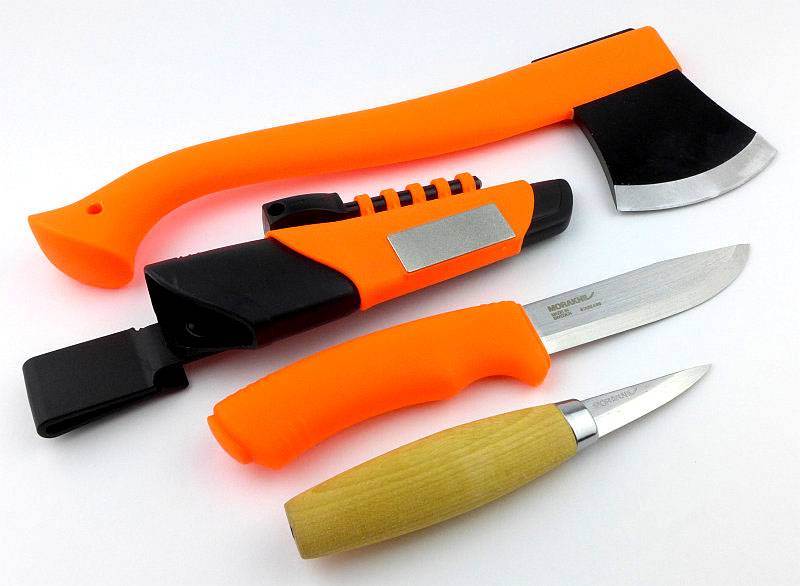
What are they like to use?
There are a couple of good reasons the Morakniv products are so popular; the first is their great value for money, so much so the Companion is almost disposable, and you won’t have to shed a tear if you lose one. Then there is the fact that they handle really well, being light, comfortable to hold and work with for long periods, and are very efficient cutters. The Scandi-grind used also makes them very easy for everyone to sharpen as you have a built-in edge angle guide.
Taking time to specifically re-assess these knives, I spent a couple of days making a few camping accessories from pot hangers to a spoon.
Roughing out a spoon requires a lot of wood removal, but you also need to be careful; the Outdoor Axe made light work of this.
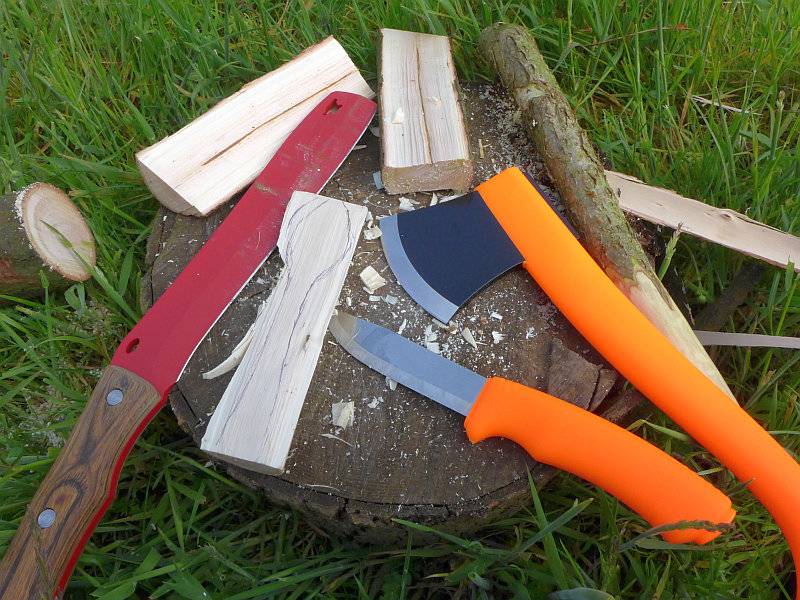
A bit of a jump forwards here and in the shaping of this spoon, the Companion models were also used. Comparing the Companion and Bushcraft Survival is not straightforward. The Companion with its thinner blade does cut with less resistance carving wood and cutting other materials, but the Bushcraft Survival’s thicker blade makes it more robust if batoning with it and also gives a more comfortable spine to push on for certain cuts.
For the tighter radiuses the 120 wood carver is king, and for the bowl of this spoon you really do need a hook knife and the Mora 162 is the one I had to hand.
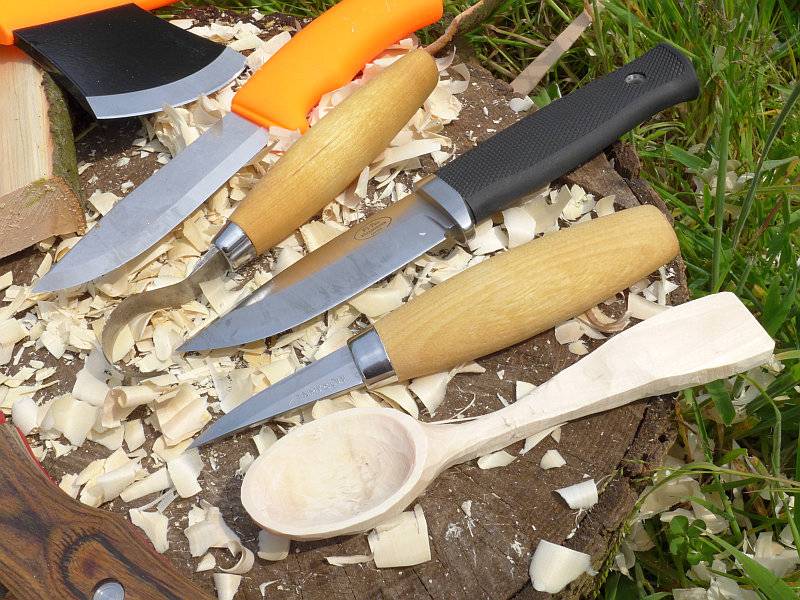
Looking at the back of the bowl, nice clean cuts can be seen in all directions.
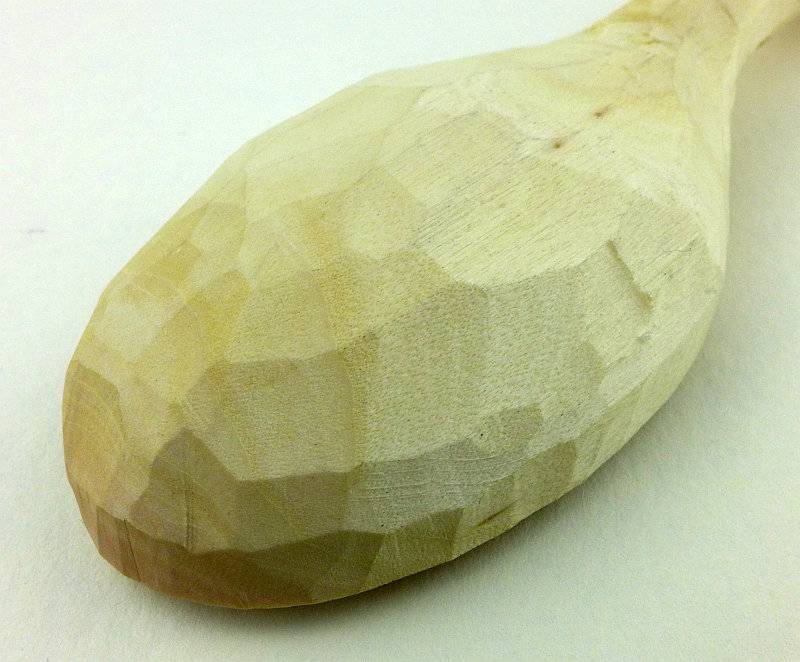
Not yet mentioned is the Serrated Companion. It was not well suited to woodcarving, and has a particular place when you are dealing with fibrous materials. Personally I would keep the Serrated version on standby for a few specific tasks rather than have it as a general use knife, and with the Companions being so inexpensive you can have both plain and serrated blades without breaking the bank.
Moving more into the ‘survival’ area, though a Companion would serve you well if it were the only blade you had, the Bushcraft Survival is that much more sturdy and has a built-in diamond sharpener and a fire-steel; definitely a more complete package.
The spine of the Bushcraft Survival has been left with a sharp corner to make striking the fire-steel effective and this is a typical strike. (slowed down to better show the sparks).
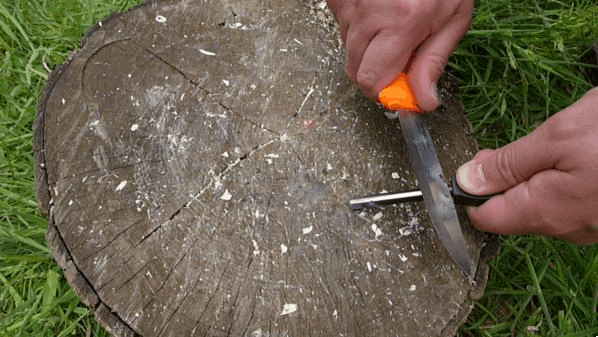
Morakniv have been making tools for a very long time, and their tools are designed to be used; you don’t buy a Morakniv as a drawer queen. It is clear when you use them, they have been designed very well and perform admirably. We are not talking super-steels here though, so you will need to maintain the edge and not expect them to survive extreme punishment.
With Morakniv, you will find you tend to end up with quite a few. One in the tool box, one or two in the fishing tackle box, one in the car, ………..(fill in your own here)…..and several for the family when going camping. Tools you are happy to use, lend or give as gifts. When did you get your first Morakniv?
Review Summary
The views expressed in this summary table are from the point of view of the reviewer’s personal use. I am not a member of the armed forces and cannot comment on its use beyond a cutting tool or field/hunting knife.
Something that might be a ‘pro’ for one user can be a ‘con’ for another, so the comments are categorised based on my requirements. You should consider all points and if they could be beneficial to you.
| _______________________________________________ | _______________________________________________ |
| Things I like | What doesn’t work so well for me |
| _______________________________________________ | _______________________________________________ |
| Great value for money. | Steels not as tough as more expensive knives. |
| Reliable build quality. | Not full tang (Stick tangs used). |
| Choice of light or heavy duty blades. | Scandi-grind not suited to all cutting tasks. |
| Diamond sharpeners available (or included). | |
| Choice of Stainless or Carbon Steels. |
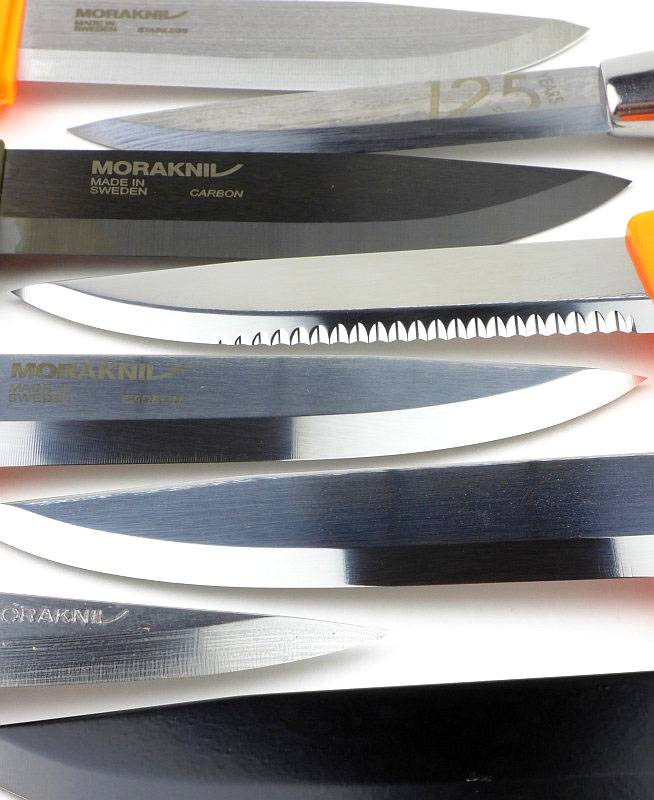
Discussing the Review:
Please feel free to add comments to the review, but the ideal place to freely discuss these reviews is on a forum. If you started reading the shorter forum version of the review, but followed the link this full exclusive review, please return to that forum to discuss the review there.
If you read the review entirely on Tactical Reviews, please consider one of the following to join in any discussion.
EdgeMatters – Sponsored Reviews (UK based Forum for Knife Makers and Collectors)
BladeForums – Knife Reviews (US based Forum for Knife Discussion)
CandlePowerForums – Knife Reviews Section (Largest and Friendliest Flashlight Community Forum)

